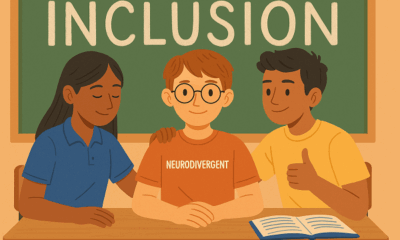Education
Turning Small Ideas into Big Wins
PARVATHY JAYAKRISHNAN explores the importance of teaching entrepreneurship in
schools and how to go about it.

"The way to get started is to quit talking and begin doing.” – Walt Disney
Walt Disney’s quote defines the true essence of what good entrepreneurs do—they don ’t just hold on to an idea, they get the ball rolling.
Our teachers are doing a fantastic job of training students to learn topics that are covered in their textbooks, guiding them morally and making them independent and self-sufficient. They are also often focused on preparing students for the future – to make them strong, confident and sometimes ready for jobs that are not even discovered yet! (It is true that technolo gy is taking over a number of jobs and we cannot predict the jobs that will be availa ble 10 years from now). We are living in a time when students will most likely use their skills to create their own employment. They may not use their skills to join a workforce necessarily. In this case, it is the risk-takers who have a better shot at success. This, in turn, implies that teaching entrepreneurship in schools is imperative and can have far-reaching results in encouraging students with creativity and encourage them to work hard towards a goal. Entrepreneurship education prepares students to identify and address challenges and opportunities.
However, the word “entrepreneurship” can be daunting for a school student. They would wonder how they would learn what entrepreneurship is considering they can barely pronounce the 16-letter word! What we need to teach them is that an entrepreneur is an entity which has the ability to find and act upon opportunities to translate inventions or technology into new products. An entr epreneur becomes successful when he combines skill and innovation. You have had that student in class who is great with technology and designing and creating logos and videos in exchange for money. Today, students own and run YouTube channels which earn them good money. Students often become entrepreneur s without even realizing it! When given the right knowledge and boost, they will be able to take it forward as they become adults.
Omkar Mantri, a grade 8 student at Vibgyor High school, Bangalore, has dropped science and chosen to learn only economics from class 9. He explains why teaching entrepreneurship in schools can be a big boon for students like him. “I would love to understand how an idea can be converted into a business plan. It will be great to get practical information, instead of the excessive amount of theory that we normally have to study. I would love to learn about rules/laws, business models and related subjects in school. It will give us an idea about the perils of getting into business and we can choose our electives accordingly. Also, entrepreneurship must be made an attractive and viable concept, so that students don't rush towards an engineering college or a job in an IT company.”
While the world around us is developing at a fast pace with technology and innovations, education in K-12 needs to move an extra mile to evolve accordingly. Education is the driving force behind e very country’s economy, directly or indirectly. Many schools in India have adapted to technology or are slowly making the change. They are encouraging students to work in groups to solve problems, they are encouraging online learning and they are even attempting to merge art with science to make learning more effective. However, even with all these new techniques, students often fail to perform at jobs because they lack knowledge in entrepreneurship. Thus, entrepreneurship, the capacity to not only start companies but also to think creatively and ambitiously, is very important to be included in the school curriculum.
“Entrepreneurship skills are necessary for the current generation of kids. They need to have negotiation skills right through the early years. They need to build thinking skills and design thinking is the beginning of an entrepreneurial journey. They also need to be risk-taking and they need to develop the ability to forecast. If students are taught these skills at the school level, they can be more planned and ready when they grow up. Most kids don't know that they have an entrepreneurial streak and this can be identified if it is taught in schools,” says Deepali Ghosh, mompreneur and mother to a 10-year old.
Entrepreneurship education empowers students with the skill to think outside the box and nurture unconventional talents and skills. It creates opportunities for all, ensures social justice and instills confidence in students. We often mistake entrepreneurship to be a skill to be imparted in undergrad or post graduation. Why wait till then? Entrepreneurship is a lifelong learning process – it can be taught from elementary school till they become adults. Introducing young kids to entrepreneurship develops their initiative and helps them to be more creative and self-confident in whatever they undertake and to act in a socially responsible way.
According to Dr. Prakash Sai L, Professor, Dept of Management Studies, IIT Madras, “Teaching entrepreneurship in schools is absolutely necessary. Already CBSE has a course called Business Studies in class 10 to introduce basic concepts of entrepreneurship. Entrepreneurship is seen as a particular type of skill that will enable a student to start a firm and ensure business growth. Today, even our society is encouraging student entrepreneurs. We often see young children set up stalls in apartment complexes, trying to sell food. When society is encouraging students to develop entrepreneurial skills, schools need to back them up by giving them the knowledge.”
Entrepreneurship teaches students about money, investing, business strategies, loans, and creating budgets. At the same time, students can learn critical life skills such as problem-solving, brainstorming ideas, taking risks, facing failure and getting up again, setting goals, working together, and feeling comfortable to work individually.
Deepali recalls how she was amazed at her 10-year-old daughter’s idea to sell homemade watermelon juice to tired gym-goers at 10 am during her summer holidays. “She made the juice and sold it at a profit of almost 110 per cent! What she figured was the ability to judge that there is a buyer’s market and she figured the pricing on her own. She even used a USP ensuring that she used organic watermelon and brown sugar (keeping in mind that her target audience are gym goers),” she proudly remembers.
Government initiative
The Delhi AAP government took a step in the right direction by launching the Entrepreneurship Mindset Curriculum Framework for government schools in February, this year. The Entrepreneurship Mindset Curriculum Framework was developed by the State Council of Educational Research and Training (SCERT).
Deputy Chief Minister Manish Sisodia had explained that the curriculum would invariably bring about a paradigm shift in the education system in the way students explore and learn and in the manner teachers facilitate and guide these exploratory processes. He also emphasised that an entrepreneurial mindset was required for all professionals to be successful in their career. Success stories of various professionals and public servants testify it.
It will be implemented in all Delhi government schools from classes 11 to 12 and will build awareness and knowledge of various aspects of entrepreneurship among the students. The curriculum is expected to inspire students through various entrepreneurial stories, case studies and many mindfulness activities and approaches. It focus – es on imparting the personality and character traits of successful entrepreneurs other than the business aspects of entrepreneurship. The curriculum is expected to be launched as a pilot project in 15-20 schools in April and will see a full-fledged launch in all government schools in July.
‘School teachers are the most important influencers’ …Says Pradeep Mishra, Founder, Leader to Creator, India's first organisation providing entrepreneurship training to children.
Why do you think entrepreneurship learning should be introduced in schools?
Our entrepreneurship for kids programme intends to make a remarkable impact on various fronts of developing nations like India. The world has migrated to a knowledge-based economy where innovation and entrepreneurial mindset will be a game changer. We cannot push the youth directly into jobs after their attain their degree. My conviction is that an entrepreneurial mindset can only be beautifully crafted at an early age. Children can be exposed to a controlled economic environment so that they understand the world around them and relate to it. They can recognise the problems of people as an opportunity and come up with innovative solutions which are scalable.
Our entrepreneurship programme also helps students unleash their creative potential in a big way. The entrepreneurship programme also focuses on life skills such as critical thinking, problem solving, time management, self awareness and personal brand image. These skills help them excel in any field of their choice. Kids have ideas but giving them a proper ground and skills to make it a functional model is what we do. Studies have shown that 80 per cent of our graduates are not even employable. This is the consequence when we have one size fits all approach in education.
How many schools do you cater to?
In 2017, Leader to Creator has been shortlisted by Economic Times Power of Ideas. I have per – sonally interacted with more than 5,000 students. We have worked with 11 campuses and we are operational in three states with expansion in Nepal.
Our in-house "Train the Trainers" programme is creating a pool of passionate trainers who can operate in different parts of the country. We have identified six more states touch points in Northern and central India, where we will be operational this year. We are also encouraging schools to nominate teachers who are interested in getting trained.
What was your inspiration to start Leader to Creator?
I have seen the pressure of placements and degree completion. I have witnessed the shattered aspirations of students who are not doing the things they wanted because their talent could not be converted into a business model. I worked with a few reputed brands in my career and there the problem was scarcity of talented people. So on one hand, students are looking for jobs but the industry says they are not good enough.
Economics shows that there are too many problems that need to be sorted out in our country. It means that there is a lot of work to be done. At the same time, we have a workforce that is looking for jobs. Do you notice the gap? Our mindset needs to be changed and the necessary skill set needs to be imparted. However, the moment we started teaching entrepreneurship in colleges, it only added on as another subject to pass. Students often asked me “Will this course help me get better placement offers?” Leader to Creator is bridging this gap.
How has the response been from schools?
Majority of schools are now interested in trying new things because they strive to be ahead of the times and they are committed to provide a better future for their students. There are schools where people still think that entrepreneurship is a business study meant for business schools only. We must sensitise education forums about entrepreneurship education as this is happening all across the globe. Awareness is the key.
Is it hard to convince the parents?
Fortunately, in our country, teachers are perceived as the best guide for a student's career and future. Parents trust them and kids listen to them. Leader to Creator is continuously working for awareness programmes in schools. We organise free seminars in schools during PTMs and other fests, but school teachers are the most important influencers.
Introducing entrepreneurship skills in classroom
You don’t even need to introduce the concept of entrepreneurship in a formal way and use business jargon that can seem complicated to your students. Multiple skills that aid entrepreneurship can be developed using activities in the classroom. Some skills that need to be de veloped include:
Communication skills: Communication is key for an entrepreneur and enhancing communication skills in students is something that teachers can work on in schools. Instead of standard class discussions, teachers can give students a chance to practice public speaking. Teachers can make this shift by introducing pop-up debates. With these activities, kids are positively pressurised to speak in front of an audience and they gradually develop the confidence to do it.
Brainstorm ideas: Teachers can set up a box in a class where students can put in their ideas. The box is a good way to encourage students to come forward with their ideas and to pitch them confidently in front of their class. Once all the ideas are in, there can be a brainstorming session where the entire class can discuss the viability of the idea and see if they can be implemented The brainstorming session can improve their critical thinking skill and problem-solving abilities. They can explain how their idea can bring about a change in society. Teach students to think about what’s positive or strong about their work and let them ponder on their weaknesses to find the changes needed to make their product more interesting.
Discuss solutions: Students often complain about facilities or rules that are implemented in the school. Teachers can encourage them to come up with solutions to these problems based on discussions rather than giving them space to complain. This can have positive outcomes. It can improve the relationships among students, improve their self-esteem and encourage problem-solving.
Discuss success stories: Encourage students to research on successful entrepreneurs and their methods and strategies and get them to discuss them in class. Each entrepreneur uses different skills and strategies to make their way to the top. For example, Oprah Winfrey relies on her oration skills and compassion while Steve Job’s quest for innovation and perfection made him reach the top. Such discussions also encourage students to find out what they could have done better to improve their skills.
Learning a business: Students can practice writing interview questions and conduct interviews with entrepreneurs. The information can then be compiled into a directory of the types of goods and services, locations, and hours of the businesses. Students can then discuss the location, advertisement and the products involved in the business.
Encourage imagination: Creativity dwells within imagination. Pass around common objects to students and encourage them to imagine the object in a different outlook. This will help students see the same object through a different perspective.
Organisations Supporting Student Entrepreneurship
In the USA, there are numerous organisations formed that support student entrepreneurs in various capacities.
• Dorm Room Fund: A student-run venture fund backed by First Round Capital
• Entre-Ed: Support for teachers and programme leaders
• The Future Project: Helps high schools provide entrepreneurship programmes
• Junior Achievement: Fostering work-readiness, entrepreneurship and financial literacy skills
• Kairos Society: Network for entrepreneurs under 25
• Lean LaunchPad: From Silicon Valley’s Steve Blank
• MIT Launch: High school entrepreneurship programs
• Network for Teaching Entrepreneurship (NFTE): Preparing young people for business
• National Student Leadership Conference: Conference supporting high school entrepreneurs
• One Stone Solution Lab: Organisations, foundations, businesses and start-ups can engage a team of One Stone students in design thinking a solution, business idea or product.
• Real World Scholars: Works with teachers who use entrepreneurship to engage students in core curriculum
• Roadtrip Nation: Roadtrip offers experiences, interviews and curriculum
In the UK:
• Shell LiveWIRE: Shell LiveWIRE aims to inspire young people to find solutions to energy and resource challenges facing today’s society.
• National Association of College and University Entrepreneurs – A membership charity organisation fostering student entrepreneurship with a focus on supporting the creation of enterprise societies in educational institutions in the UK.
• Santander Universities Enterprise Portal – The portal helps young entrepreneurs win funding for their startups, build their business knowledge and access networking opportunities.
• Tycoon In Schools – Tycoon in Schools gives upcoming entrepreneurs, aged 5-18, a start-up loan between £50 to £1000 to manage a business while at school or college.
In India:
Leader to Creator programme
Started by Pradeep Mishra, the Leader to Creator programme is India’s pioneer academy for entrepreneurship training in schools. Leader to Creator is a group of professional trainers who have scientifically designed curriculum, which is a blend of technical skills, soft skills and life skills to teach entrepreneurship to students. They use the latest technology to interact with participants. They add fun in learning by live projects, camps, smart classes and business games.
Mishra has designed a fun-filled 60- hour course on “Entrepreneurship for Kids”. The idea was recognised by the Economic Times Power of Ideas. The course is now offered in some of the most prominent schools in India.
Awards
Entrepreneurship awards are a good way of encouraging young entrepreneurs to come up with innovative ideas and put them to practice. However, there are not many such awards that encourage school students.
• The Global Student Entrepreneur Award (GSEA): Student entrepreneurs compete through regional competitions to win their shot at going head to head against the best student entrepreneurs in the world at the GSEA. Undergraduate and graduate college/university students who own and operate a business for at least six months are eligible to compete for the $20,000 cash prize.
• The Big Idea (Australia): Coordinated by The Big Issue, The Big Idea is a social enterprise planning competition. Open to undergraduate and postgraduate students of participating Australian universities, applicants are invited to develop a concept and business plan for a brand new social enterprise.
• Lee Kuan Yew Global Business Plan Competition: The competition is designed for undergraduate, college or polytechnic students across the globe. The idea is that students can display their business skills on a global platform, which will allow them to gain seed funding.
Teaching entrepreneurship skills in school is not merely for helping a student identify his skills or to fulfill the ultimate goal of starting a firm. We need to provide teachers with the appropriate training to impart knowledge to students in a way that they can understand and be involved and interested in. The learning can provide life lessons like perseverance, money management, problem-solving and much more. The classes will enable teachers to identify potential entrepreneurs and give them the support they need to move ahead towards their goal.
Let’s not merely include it in our syllabi as yet another subject. Let’s adopt it in a way that it becomes a life-changing experience for our students, where they learn values and skills that they can use when they become successful adult entrepreneurs!
Education
AI to Become a Core Subject from Class 3: India’s Big Leap Toward a Future-Ready Generation
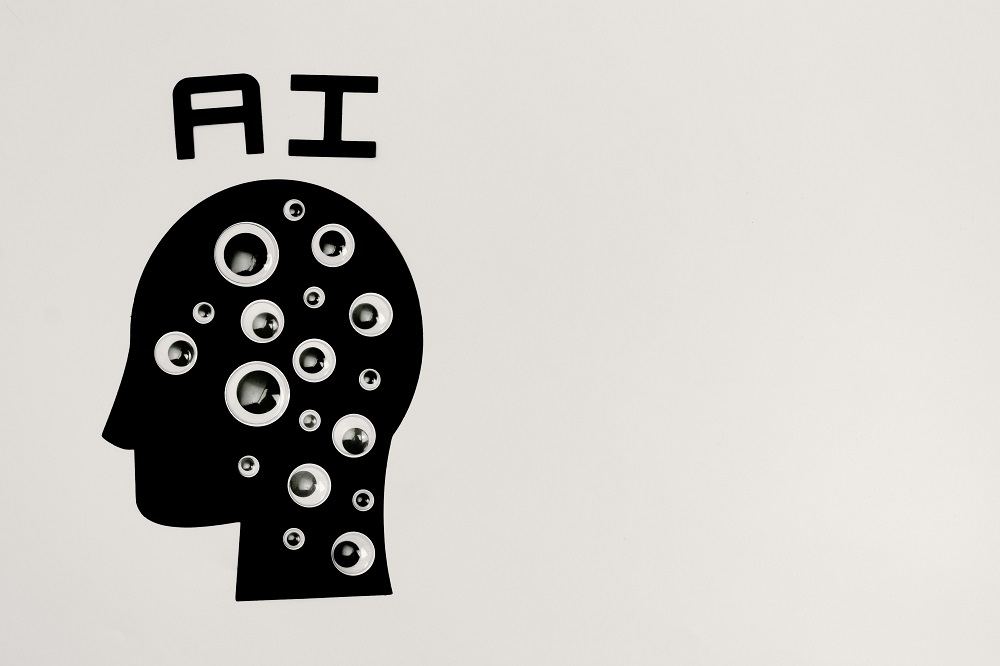
In a landmark move to make India’s school system future-ready, the Department of School Education & Literacy (DoSE&L), Ministry of Education, has announced that Artificial Intelligence (AI) and Computational Thinking (CT) will be introduced as part of the school curriculum from Class 3 onwards, beginning in the academic year 2026–27.
The initiative marks a major step in preparing students for an AI-driven world, ensuring early exposure to technological literacy, ethics, and problem-solving. The curriculum, currently being developed through a consultative process with CBSE, NCERT, KVS, NVS, and States/UTs, will fall under the National Curriculum Framework for School Education (NCF-SE) 2023, in alignment with the National Education Policy (NEP) 2020.
A stakeholder consultation held on 29th October 2025 brought together education leaders, including Prof. Karthik Raman from IIT Madras, who heads the CBSE expert committee responsible for shaping the AI & CT curriculum. The focus is on designing a meaningful, inclusive framework that integrates AI not as an advanced elective but as a foundational skill — comparable to literacy and numeracy in importance.
Shri Sanjay Kumar, Secretary, DoSE&L, emphasised that AI education should be viewed as a universal skill closely linked to real-world applications. “Every child’s distinct potential is our priority. Policymakers must define minimum thresholds and evolve them with changing needs,” he said. He also stressed on teacher training as the backbone of successful implementation, with modules under NISHTHA, and resource materials being prepared by NCERT and CBSE.
The Ministry plans to release AI handbooks and digital resources by December 2025, followed by a grade-specific rollout supported by video-based learning materials and structured training.
By embedding AI education from the foundational years, India aims to nurture a generation that understands, creates, and applies technology ethically — transforming the vision of AI for Public Good into everyday classroom reality.
Education
Dharav Utsav to Celebrate Rajasthan’s Cultural Heritage and Local Talent

Education
How to Build Better Parent-Teacher Communication

Good communication between parents and teachers plays an important role in a child’s learning and confidence. When both stay connected, it helps students feel encouraged and understood. Still, it’s not always easy to keep that connection strong. Busy schedules and small misunderstandings can make things tricky. The good news is that a few simple habits can make a real difference. Let’s examine what parent-teacher communication truly entails and how both parties can collaborate more effectively.
What is Teacher and Parent Communication?
Teacher and parent communication is all about staying connected and working together for a child’s growth. It’s not just a one-time meeting or message but a continuous, two-way exchange of updates, ideas, and feedback. When teachers and families stay in touch regularly, it creates a strong support system that helps students do better both in and outside the classroom.
In simple terms, teachers share what’s happening at school, like:
- Homework and assignments
- Grades and test results
- Class activities and behavior updates
- Social and emotional progress
- Strengths and areas where a student might need extra help
At the same time, parents share what’s happening at home, such as:
- How the child feels about schoolwork
- Any challenges or changes they’ve noticed
- Questions or suggestions about learning support
When both sides keep the communication open, it builds trust and teamwork. Teachers understand students better, and parents feel more involved in their child’s education.
Tips for Smooth Parent-Teacher Communication
Talking to parents doesn’t have to feel formal or uncomfortable. In fact, the better your connection with them, the smoother your teaching journey becomes. Whether you’re reaching out for the first time or trying to keep the conversation going, here are some real-world ways to build trust and keep communication easy, clear, and helpful.
1. Begin with a Friendly Introduction
Right at the beginning of the academic year, take a moment to introduce yourself to parents. You can send a friendly email, a printed note, or even a short video message. Let them know who you are, what you’re excited about, and how they can reach you. This early step breaks the ice and helps parents feel welcome and included in their child’s learning journey. When you set a positive tone early, it makes future communication easier and more comfortable for everyone.
2. Communicate Often, Not Just When There’s a Problem
Don’t let communication only happen during parent-teacher conferences or when something goes wrong. Send regular updates about what’s happening in class, upcoming events, or even small successes their child has had during the week. These don’t need to be long messages. A quick note about a student’s progress or behavior can make a parent’s day and help build trust over time. It also shows that you’re not just reaching out when there’s a problem.
3. Invite Their Voice, Too
Sometimes we forget that parents know their child better than anyone else. Ask questions. How does their child learn best at home? Are there any routines or challenges you should know about? And when they speak, listen fully. These conversations often reveal things that can shape how you teach and connect with the student.
4. Be Available and Approachable
Parents need to know that they can come to you when something is on their mind. That doesn’t mean being available 24/7, but it does mean creating space for honest conversations. You can let them know about your preferred times for calls or meetings, and also offer virtual options if in-person isn’t possible. Make sure the tone of your communication is always warm and non-judgmental so they feel safe speaking up.
5. Treat Parents as Team Members, Not Outsiders
Instead of just delivering information, try to involve parents as partners in their child’s learning. Share ideas for how they can help at home, ask for their observations, and thank them for their efforts. If there’s a behaviour issue or academic challenge, work with them on solutions instead of just reporting the problem. A strong home-school partnership creates a consistent support system for the student, both inside and outside the classroom.
6. Show Cultural Awareness and Respect
Families come from many different backgrounds, and their expectations may vary. Take the time to learn about their culture, language preferences, and family structure. Avoid making assumptions or using language that might feel exclusive. If needed, provide translations or simplify your communication to make sure everyone understands. This small effort shows parents that you value who they are and where they come from.
7. Share Progress in a Way That’s Clear and Supportive
Progress updates should be balanced. Yes, it’s important to point out what’s not working, but don’t forget to highlight what is. Give specific examples instead of vague praise or criticism. Say things like, “I’ve noticed Priya really lights up during science experiments,” or “Rohan is still working on staying focused during group tasks.” This kind of feedback feels personal and helps parents understand the full picture.
8. Choose the Right Tools for the Right Message
Too many apps or tools can overwhelm parents quickly. Choose one or two that you’ll stick to, whether it’s a school app, WhatsApp group, or weekly email. Use them for quick updates, reminders, or sharing student wins. Keep your tone casual but clear. Tech is helpful only when it makes life easier for both sides.
9. Respect Their Time and Yours
Teachers and parents are both juggling busy schedules. Respecting each other’s time helps keep communication productive and stress-free. If you’re scheduling meetings, offer time slots that work for working parents, too. Keep conversations focused so that meetings don’t run longer than necessary. Also, set clear boundaries about when you’re available.
When Is Parent-Teacher Communication Most Important?
Parent-teacher communication matters most right at the start of preschool. That first day of preschool is a big moment for every child and their family. When teachers and parents talk openly from day one, it helps everyone feel more comfortable and sets up a strong partnership for the rest of the year.
Why It Matters on Day One
- The first day of preschool often brings a mix of excitement and nervousness for both kids and parents. Honest communication helps everyone feel a little more comfortable.
- Open communication lets teachers learn about each child’s background, interests, and any worries or comforts. This way, teachers can give more personalized care and support from the beginning.
- Early conversations help build a sense of trust between home and school, making the classroom feel like a safe and welcoming place for the child.
- When teachers share classroom routines and expectations with parents on the first day, it helps families get ready and feel involved in their child’s new experience.
- These early talks also give teachers helpful details, like which languages are spoken at home, special family traditions, or any recent changes in the child’s life. This helps teachers communicate better and offer the right kind of support.
By making communication a priority from the very first day, both teachers and parents can work together to help each child settle in smoothly and feel confident as they start their schooling journey. Building strong parent-teacher teamwork not only supports a child’s emotional well-being but also lays the foundation for long-term academic success.
Closing Thoughts
We hope these tips help make your conversations with parents smoother and more meaningful. Building that connection takes time, but small efforts can lead to strong partnerships.
This article is authored by-
Chitra Khanna,
Content Strategist,
KLAY Preschools & Daycare
Education
Beyond the Syllabus: School Teachers’ Insights on Project-Based Learning
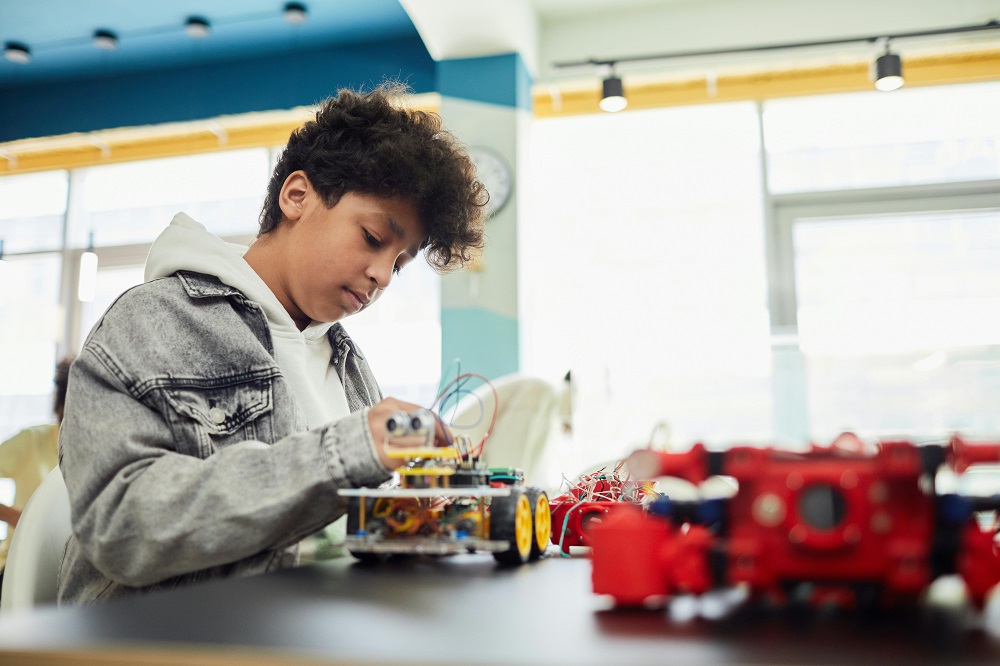
How classroom experiences are being reshaped through projects, inquiry, and authentic learning
As the classroom grows beyond the boundaries of textbooks and blackboards, so too does the role of the teacher, and the very meaning of learning. Project-Based Learning (PBL), once considered a niche innovation, is increasingly being embraced by educators across schools in India. But what happens when PBL moves from theory to practice?
To answer this, we turned to the people at the heart of the learning experience: teachers.
In conversations with educators from diverse school contexts, one theme was clear: PBL is not just a teaching strategy; it’s a transformation in how students learn, engage, and grow.
From Worksheets to Real-World Work: How PBL Differs from Traditional Homework
One of the clearest contrasts teachers observed was how PBL moves learning from repetition to relevance. Traditional homework often reinforces information through rote exercises. PBL, by contrast, asks students to apply their knowledge to solve problems, create products, or investigate issues that matter to them.
One teacher shared how using PBL to raise student awareness about water pollution was a hit in the class. Instead of just assigning problems, the students were made to create awareness posters, conduct surveys in their neighbourhood, and suggest solutions through group presentations. The teacher also noted how the students took the lead, and had an ownership over this project that they usually don’t showcase.
The shift from repetition to application fosters deeper engagement. Several teachers noted that students who previously struggled to stay motivated with homework showed renewed interest when asked to take on real-world challenges.
Changing Roles: Teachers as Facilitators, Not Just Instructors
Project-Based Learning also changes the role of the teacher, who went from being the sole source of knowledge to a guide who supports inquiry and exploration.
One common change teachers noticed was on how they had to let go of control in the classroom. Naturally, the students now had to work on projects on their own, and could only come to the teacher for guidance and help. The teachers noted that they helped their students ask the right questions, find credible sources, and evaluate their work, instead of completely placing the burden of learning on the teacher themselves.
This change isn’t always easy. It requires a shift in mindset and in many cases, rethinking how time is used in class. But most teachers agree: the shift is worth it. PBL has encouraged interdisciplinary approaches, made space for collaborative learning, and created more meaningful student-teacher interactions.
Unlocking Student Potential: What PBL Offers Beyond Academics
Academic performance remains important, but a lot of teachers repeatedly pointed out that PBL nurtures a broader set of skills, like critical thinking, collaboration, communication, and creativity. One teacher particularly noted on how their quietest students became ‘leaders’, and became outspoken when it came to presenting their ideas and projects. While not directly, PBL helped these students find their voices, and find confidence in their effort and abilities.
Students learn to manage time, negotiate roles, and solve problems, skills that aren’t always reflected in exam scores but are vital for life beyond school. For many teachers, the most rewarding aspect of PBL was watching students take initiative, work through failure, and reflect on their learning.
Widening the Circle: Strategies for Scaling PBL in More Classrooms
While the benefits are clear, teachers acknowledged that implementing PBL at a large scale comes with challenges, like limited time, rigid curriculum structures, and unfamiliarity among teachers.
They offered a few practical suggestions for schools and educators considering wider adoption:
- Start Small and Build Confidence: Starting with short projects aligned to the unit you are already teaching introduces PBL in an easy manner. This way, teachers do not have to worry about overhauling their curriculum, or for making huge changes to their current teaching methods.
- Encourage Collaboration Among Teachers: Joint planning across subjects makes projects richer and more integrated. This also promotes interdisciplinary skills among students, and allows them to craft solutions using different subjects and skillsets.
- Make Time for Reflection: Embedding opportunities for students to present, critique, and reflect helps solidify learning. By reflecting on their projects and mistakes, they can understand how they can improve their approach to PBL.
- Support Professional Development: Teachers emphasized the need for ongoing training, not just one-off workshops but long-term spaces for peer sharing and mentorship. This continuous development would cement and solidify the methods and outcomes that will maximise using PBL for student benefits
Looking Ahead: Redefining Success in Education
PBL challenges traditional ideas of what learning looks like. It pushes students to move beyond memorization, and it challenges teachers to rethink their methods. But more than anything, it opens up the classroom to ideas, to communities, and to possibilities. No longer are students just preparing for exams, but also for the complex world outside school.
As educators continue to navigate the changing landscape of education, the insights from teachers point us toward a hopeful future, where learning is meaningful, relevant, and rooted in real-world experience.
This article is authored by Mrs. Padmashini M Patro, Principal, Air Force School Bamrauli
Education
Over 1 Lakh Single-Teacher Schools Educate 33 Lakh Students Across India: MoE Data
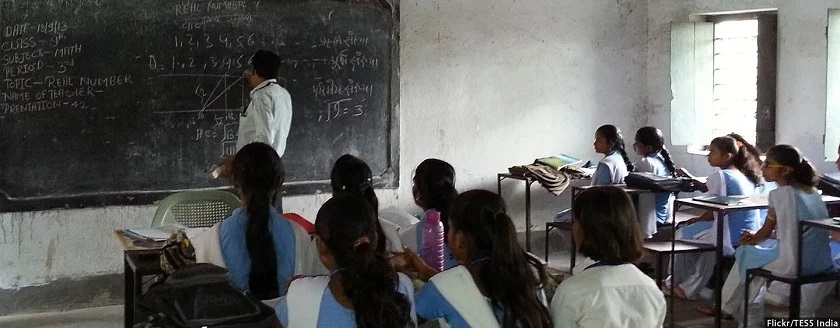
Education
Over 3 Lakh Schools Join Hands for India’s Largest-Ever Innovation Challenge: Viksit Bharat Buildathon 2025

In a historic moment for Indian education, more than 3 lakh schools across the country came together to participate in the Viksit Bharat Buildathon (VBB) 2025, the largest live school innovation challenge ever organised in India. The nationwide event was inaugurated in New Delhi by Union Education Minister Dharmendra Pradhan, marking a significant milestone in the Government’s efforts to embed creativity, innovation, and problem-solving into the school ecosystem.
The Viksit Bharat Buildathon, organised by the Department of School Education & Literacy (DoSEL) in collaboration with Atal Innovation Mission (AIM), NITI Aayog, and AICTE, saw over one crore students from Classes 6 to 12 working simultaneously during a 120-minute live innovation session. Students teamed up in groups of three to five to design prototypes and propose solutions under four themes — Atmanirbhar Bharat, Swadeshi, Vocal for Local, and Samriddhi.
While inaugurating the event, Minister Pradhan interacted virtually with students of PM SHRI Government High School, Khorda, Odisha, and later visited Delhi Public School, Mathura Road, and Kendriya Vidyalaya No. 2, Delhi Cantt. Commending students for their creativity, he said, “The vision of Viksit Bharat will be realised through the innovative spirit of our young learners. These ideas will not only address domestic challenges but also create global models for change.”
The event drew widespread participation, with Uttar Pradesh leading the numbers (78,206 schools), followed by Maharashtra (41,198), Gujarat (20,017), and Madhya Pradesh (18,129). Other states like Tamil Nadu (16,370), Bihar (15,732), Odisha (12,344), and Haryana (11,567) also recorded impressive engagement, showing the growing momentum for grassroots innovation across regions. Even smaller territories like Ladakh (358), Puducherry (149), and Andaman & Nicobar Islands (171) participated actively, reflecting the nationwide reach of the initiative.
According to Sanjay Kumar, Secretary, DoSEL, this unprecedented participation signals a transformation in how Indian students approach learning. “This one-of-a-kind movement strengthens innovative thinking and enhances the problem-solving capabilities of students across India,” he said. Deepak Bagla, Mission Director of AIM, called the initiative a “mass movement connecting schools in remote villages with those in metropolitan cities through innovation.”
A New Chapter for Indian Education
The Viksit Bharat Buildathon signifies more than just a hackathon — it reflects a systemic shift in Indian education towards experiential and innovation-led learning. As schools across the country engage in design thinking, tinkering, and collaboration, students are being equipped not just with knowledge, but with the mindset and skills needed to build a self-reliant India.
By nurturing creativity from an early age and fostering partnerships between schools, government bodies, and industry, the Buildathon is shaping a generation ready to contribute to the vision of Viksit Bharat 2047 — a developed, empowered, and innovation-driven India.
Education
17-year-old Innovator Designs Learning Tools for the Visually Impaired

At just 17, Singapore-based student Ameya Meattle is proving that age is no barrier to impact. What began as a small idea to make education more accessible has evolved into a mission that is transforming how visually impaired learners experience learning and skill development.
Ameya founded Earth First at the age of 14 — a social enterprise that helps visually impaired individuals “earn and learn” by creating sustainable, eco-friendly products. Working with eight NGOs across India and Singapore, the initiative has trained more than 100 visually impaired students and launched over 23 sustainable product lines, from tote bags and jute placemats to macramé planters. Each design is adapted to provide hands-on learning opportunities and help trainees gain confidence in both craft and enterprise.
Beyond social entrepreneurship, Ameya has focused deeply on education and technology. He led a Python programming course for 50 visually impaired students, designing custom training modules that made coding accessible through screen readers and tactile tools. By introducing technology as a viable career pathway, Ameya hopes to help students move from manual tasks to high-skill, digital opportunities.
His work also extends into assistive technology research. Under the mentorship of Dr. Pawan Sinha at MIT, Ameya developed a VR-based diagnostic game to assess visual acuity in children — turning the process into an interactive experience rather than a clinical test. The tool is being piloted at MIT’s Sinha Lab and with Project Prakash in India, helping doctors evaluate and track visual development before and after eye surgeries.
In addition, during his internship at the Assistech Lab at IIT Delhi, Ameya worked on designing tactile STEM teaching aids, such as accessible periodic tables and coding tutorials for visually impaired learners. His goal, he says, is not just to innovate but to make scientific learning inclusive and joyful for all.
Ameya’s work highlights how education, empathy, and innovation can intersect to create a more equitable future — one where technology serves not just progress, but people.
Education
Empowering Young People to Champion Neuro-Inclusion
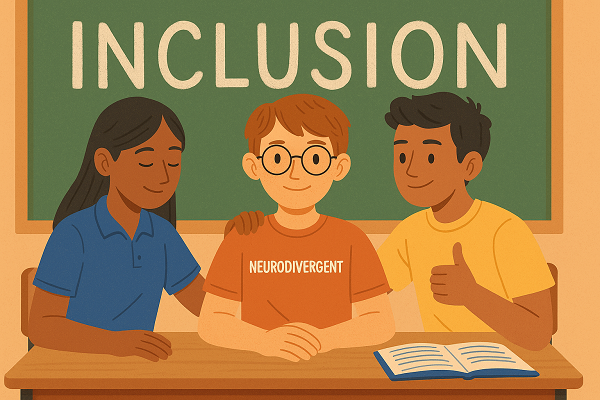
Aamir Khan’s recent film Sitaare Zameen Par has brought neurodiversity into the mainstream, and sparked important conversations about inclusion and rethinking what we consider ‘normal’. These cultural moments help raise awareness, but they also remind us that there is still a long way to go in making inclusion a lived reality.
It is estimated that 1 in 8 children in India have a neurodevelopmental condition such as ADHD, autism, learning disabilities and intellectual disability. Many of these children often face social isolation, bullying and exclusion – often the earliest of these experiences begin during school.
At the same time, today’s young people indeed carry with them a deep sense of social justice and openness to diversity. The energy, empathy and bold creativity of young people can be harnessed – if nurtured in the right way, at the right time – to make them equal partners in cultivating inclusive cultures in schools and communities.
We need young allies – people who are not only informed, but who engage meaningfully with neurodivergent peers, actively support the cause, and drive inclusivity. The key lies in equipping them with the knowledge, skills, and ultimately the mindset needed for inclusion. Schools must invest in nurturing young allies who can champion neurodiversity and take ownership of inclusion in spaces they belong to.
Our experience and work on youth allyship has shaped our understanding of what it takes to make this happen. Here are some of our most important insights:
- From awareness to active allyship: We need to move beyond awareness about neurodiversity, by equipping students with the knowledge, skills, confidence, and opportunities to take meaningful action as allies for neuro-inclusion.
- A personalised journey: Allyship is a lifelong journey which is most authentic when it grows organically from curiosity, dialogue, self-initiative and experiences. It cannot be imposed, and must be led by the individual.
- Student autonomy: When students have the autonomy to choose how they contribute, their commitment deepens. We should give students a mix of structure and freedom to help – guidance to shape their efforts, alongside the space to decide how they want to step up for meaningful change.
So how can schools nurture students as young allies?
- Create safe, relatable spaces led by students, for students Peer-led conversations give students space to reflect on diversity, challenge stereotypes, and share personal experiences. When peers lead, the power dynamics shift – students listen more openly, express without fear of judgment, and begin to see inclusion as something that belongs to them, not just a directive from authority figures. Our Inclusive Duniya Circles are one example of such spaces. Students are primed and empowered to sensitively facilitate conversations about disability, neurodiversity and inclusion.
- Explore connections to students’ interests and strengths
Students should be given the opportunity to discover how they feel about the cause and how they want to contribute. At the end of each Circle, we often ask, “How do you want to step up for an Inclusive Duniya?” The answers vary, but what matters most is that the initiative comes from the students themselves. Our role as adults and educators is to support them in making it happen.
Some take the route of advocacy – sparking conversations and campaigning for the cause with schoolmates. Others channel creativity through music, art, or theatre that challenges stereotypes.
For instance, the song Inclusive Duniya (available on Spotify), was written, composed and produced by students on their own from carefully crafting lyrics which invited listeners to imagine a world where everyone feels like they belong to picking melodies that convey warmth. Students used their creative talents to make a gentle but compelling call to action for allyship. Helping students tap into their personal strengths and interests enables authentic engagement and contribution to the cause.
- Embed into academic and co-curricular pathways
Linking students’ inclusion initiatives and projects to existing academic opportunities, such as CAS projects in the IB curriculum, allows them to merge personal passion with academic commitment. Framing these initiatives as co-curricular activities also strengthens students’ profiles for college applications. This dual recognition provides a formal recognition to their efforts and ensures students’ efforts are sustained – adding motivation, depth and commitment to their efforts.
The voices of young people not only impact their peers, but also have a ripple effect in shaping how families talk about disabilities, and, in due course, how communities and workplaces open themselves up to inclusion.
With the right support, our young generation can become a driving force for an inclusive world. Schools, as microcosms of society, provide the most conducive space for young people to explore sensitive concepts, question biases, and practice inclusion in meaningful ways. By nurturing young allies who truly value and celebrate diverse ways of thinking and being, we can lay the foundation for a more Inclusive Duniya.
This article is co-authored by:

Pooja Sharma, Founder and CEO, Inclusive Duniya

Srushti Patel, Manager- Schools Programme, Inclusive Duniya
Education
Ministry of Education Urges Schools to Adopt UPI for Digital Fee Payments, Promoting Ease of Schooling
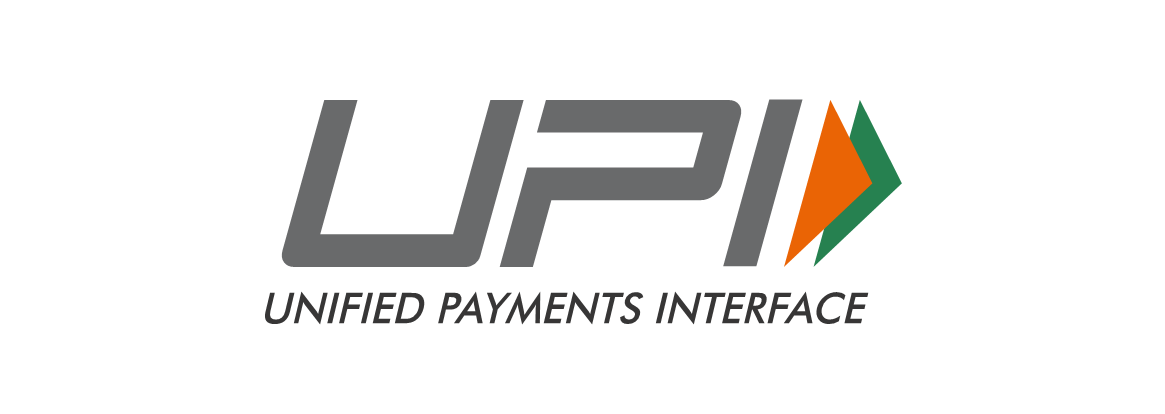
Education
Supreme Court Calls for Early Sex Education in Schools: “Not from Class IX, But from a Younger Age”

In a landmark observation, the Supreme Court of India has emphasised the urgent need to introduce sex education at a younger age, rather than waiting until Class IX as is the current norm. The apex court stated that children should be informed and sensitised about the physical and emotional changes that accompany puberty — and taught the necessary care and caution that come with it.
The observation came from a Bench comprising Justice Sanjay Kumar and Justice Alok Aradhe, which noted that the absence of early sex education leaves children vulnerable to misinformation and misunderstanding during their formative years.
“Sex education should be provided to children from a younger age and not Class IX onwards. It is for the authorities concerned to apply their mind and take corrective measures so that children are informed of the changes that happen after puberty,” the court stated.
The Bench made the remarks while hearing an appeal filed by a 15-year-old boy, who had been denied bail by the Allahabad High Court in a case under Sections 376 and 506 of the Indian Penal Code (IPC) and Section 6 of the Protection of Children from Sexual Offences (POCSO) Act. Recognising that the accused was himself a minor, the Supreme Court had earlier granted him bail in September 2025.
In the same case, the Court had directed the Government of Uttar Pradesh to submit an affidavit explaining how sex education is currently implemented in schools. The state responded that sex education is introduced only in Classes IX to XII, following NCERT guidelines. However, the Bench expressed concern over this delayed introduction and urged policymakers to revisit the framework to ensure children receive age-appropriate education much earlier.
The Court set aside the High Court’s order and made the juvenile’s bail permanent until the completion of the trial. More importantly, its remarks have reignited the national debate on the need for comprehensive sexuality education in India, which many experts argue is crucial to preventing abuse, reducing stigma, and promoting healthy development among adolescents.
Education experts have long maintained that early, factual, and inclusive discussions about puberty, consent, and emotional health must begin before adolescence — ideally in primary school — to prepare children for real-world experiences and relationships. The Supreme Court’s observation is expected to prompt renewed policy discussions on revising the sex education curriculum nationwide.
-
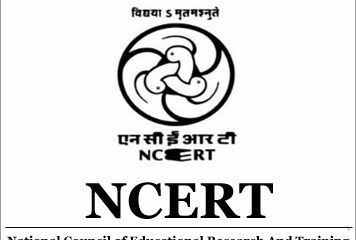
 Education3 months ago
Education3 months agoNCERT to Grant Equivalence to Class 10 and 12 Certificates Across Boards for Admissions and Jobs
-

 Education3 months ago
Education3 months agoClass 11 Student Navya Mrig on a Mission to Bust Myths About Organ Donation
-

 Education3 months ago
Education3 months agoSupreme Court Calls for Early Sex Education in Schools: “Not from Class IX, But from a Younger Age”
-
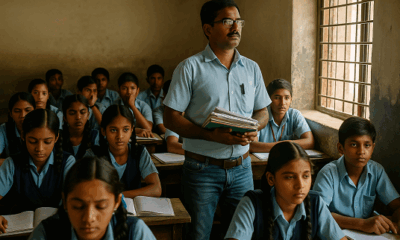
 Education3 months ago
Education3 months agoIndia Loves its Teachers, Just Not Enough to Pay Them: India Today Reports
-

 Education3 months ago
Education3 months agoAtal Innovation Mission and IFCCI Join Hands to Scale Up Atal Tinkering Labs Across India
-

 Education3 months ago
Education3 months agoBeyond the Syllabus: School Teachers’ Insights on Project-Based Learning
-

 Education2 months ago
Education2 months agoDharav Utsav to Celebrate Rajasthan’s Cultural Heritage and Local Talent
-

 Education3 months ago
Education3 months agoDelhi Government Launches Online First Aid Training Programme for Teachers
-

 Education3 months ago
Education3 months ago17-year-old Innovator Designs Learning Tools for the Visually Impaired
-

 Education3 months ago
Education3 months agoMinistry of Education to Promote Clean and Vibrant School Environments










